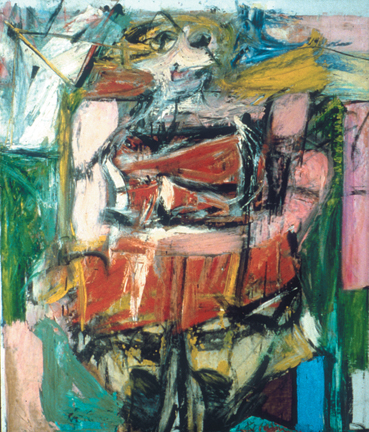Abstract Expressionism
 From Conservapedia
From Conservapedia 
Abstract Expressionism was an art movement which lasted from the late 1940s until the early 1950s. Abstract expressionism has its origins in New York City and it is the first big art movement after the Second World War. The artists used free, often random, application of paint to create images with no tie to reality. Abstract Expressionism is to art as Jazz is to Mozart. It went far outside the accepted traditions for art. The best known abstract expressionists were Jackson Pollock, Arshile Gorky, and Willem de Kooning. Franz Kline (1910–1962), Lee Krasner (1908–1984), Robert Motherwell (1915–1991), William Baziotes (1912–1963), Mark Rothko (1903–1970), Barnett Newman (1905–1970), Adolph Gottlieb (1903–1974), Richard Pousette-Dart (1916–1992), and Clyfford Still (1904–1980) also share some common assumptions; these artists valued spontaneity and improvisation, and they accorded the highest importance to process. [1] Joan Mitchell, one of a few female painters to gain critical acclaim, is considered an essential member of the American Abstract expressionist movement.
It was Robert Coates who coined the term Abstract Expressionism. "Color Field" is considered a mature Abstract Expressionism; like in the works of Mark Rothko, Barnett Newman, and Clyfford Still. CoBrA art, informalism and tachisme are related to abstract expressionism.
See also[edit]


- Lyrical Abstraction
- Painting Schools
- Mark Rothko
- Sam Francis
- Contemporary Abstract Painting
 Woman VI by Willem de Kooning, 1953.
Woman VI by Willem de Kooning, 1953.
External links[edit]
- An Inside Look at the AbEx-ers.
Categories: [Artistic Movements]
↧ Download as ZWI file | Last modified: 02/20/2023 10:22:13 | 38 views
☰ Source: https://www.conservapedia.com/Abstract_Expressionism | License: CC BY-SA 3.0
 ZWI signed:
ZWI signed: KSF
KSF